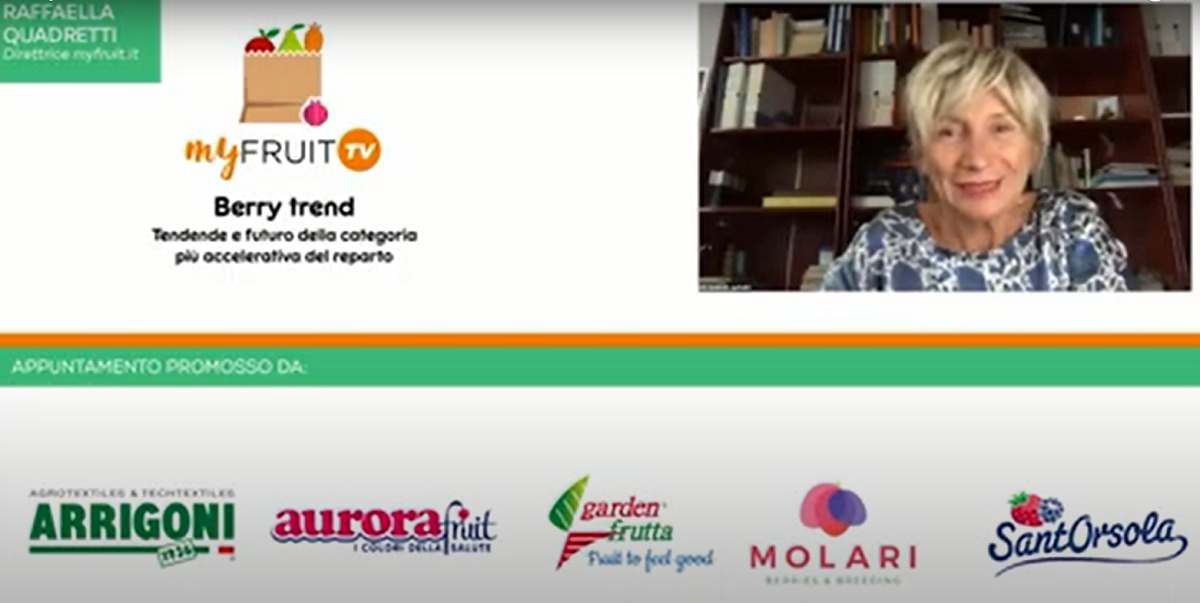E-commerce continues to shape the global shopping landscape, and the Fast-Moving Consumer Goods (FMCG) sector is no exception – products that are frequently purchased by consumers, have a short shelf life, and are typically sold at relatively low prices, often essential for daily life, such as food, beverages, toiletries, and cleaning products.
Although the Europanel report E-COMMERCE LITE 2025 focuses on FMCG excluding fresh products – an important distinction for those working with berries – the data presented offers valuable insights into general online trade trends in key regions such as Europe.
Globally, the e-commerce share of FMCG has remained broadly stable over the past three years, reaching 10.1% in 2024 across the 42 countries for which trend data is available. Penetration, i.e. the percentage of online buyers, has been the main driver of global growth, increasing by 2.6 percentage points to 48.2%. However, it is essential to analyze these trends at a regional level.
Western Europe (WE)
Western Europe presents an interesting picture. In 2024, its market share in FMCG e-commerce stood at 7.2%. Although this is below the global average and significantly lower than regions such as North and West Asia (where it exceeds 25%), Western Europe stands out in other respects.
- Penetration: Online penetration in Western Europe recovered to 35.0% in 2024. However, this figure remained 1.1 percentage points below the level recorded in 2022. It was 36.1% in 2022, dropped to 34.8% in 2023, before slightly rising again to 35.0% in 2024.
- Growth: The growth in market share in Western Europe is described as slowing down, although it showed a slight increase of +0.3 percentage points over the past year.
- Spend per Trip: Western Europe leads in average basket size, maintaining a high level of spend per trip (€/trip). In 2024, the average online spend per trip was €57.27, a figure that remained broadly stable compared to €57.43 in 2023 and up from €54.54 in 2022. This is attributed to the dominant position of large supermarket chains.
- Frequency: The frequency of online purchases in Western Europe slightly increased, going from 12.0 trips in 2022 to 12.5 in 2023 and 13.1 in 2024.
- Private Label (PL): Western Europe has an online market share for private label exceeding one third (36.6% in 2024). This is three times higher than the level observed in Eastern Europe and is the highest ratio compared to offline private label share. The online PL share in the region has remained relatively stable over the past three years (34.6% in 2022, 36.8% in 2023).
- Promotions: The share of promotional sales in e-commerce in Western Europe was 30.0% in 2024. This has increased from 27.4% in 2022 and 28.2% in 2023.
Countries in Western Europe included in the analysis are Belgium, Denmark, France, Germany, Great Britain, Ireland, Italy, Netherlands, Spain, and Sweden. Data for France, Great Britain, Ireland, and Spain was provided by Kantar, while the others by YouGov.

Eastern Europe (EE)
Eastern Europe shows a different FMCG e-commerce landscape. Its online market share is significantly lower than Western Europe’s, standing at 2.4% in 2024. However, the region is experiencing steady growth.
- Penetration: Online penetration has gradually increased, rising from 26.1% in 2022 to 26.3% in 2023 and reaching 27.6% in 2024.
- Growth: The e-commerce market share in Eastern Europe grew by +0.2 percentage points in the past year.
- Spend per Trip (€/trip): Average spend per trip has been steadily increasing, from €23.56 in 2022 to €25.90 in 2023 and €26.74 in 2024.
- Frequency: Online purchase frequency has also increased, from 8.3 trips in 2022 to 8.7 in 2023 and 9.4 in 2024.
- Private Label (PL): The online private label market share is much lower than in Western Europe, standing at 11.5% in 2024. This figure has increased from 9.8% in 2022 and 11.2% in 2023.
- Promotions: The share of promotional sales in e-commerce in Eastern Europe was 36.4% in 2024. This figure has increased from 34.3% in 2022 and 34.8% in 2023.
Eastern European countries analyzed in the report include Austria, Bulgaria, Croatia, Czech Republic, Greece, Hungary, Poland, Romania, Serbia, Slovakia, and Ukraine. All these data were provided by YouGov.
Considerations for Berry Producers
While fresh products are not directly addressed, FMCG data in Europe indicates an online channel well-established in Western Europe, characterized by high-value baskets and significant private label penetration, despite a recent drop in penetration compared to 2022 and a general slowdown in market share growth. Eastern Europe, although with a lower online market share, shows steady growth in terms of penetration, frequency, and spend per trip.

For operators specializing in berries, it is important to note that the fresh online sector may have its own dynamics, influenced by logistics specific to perishable products. However, the interest in and habit of buying FMCG online in these regions provides a favorable context for expanding categories such as fresh fruit, provided the operational challenges linked to the cold chain and delivery are overcome. The general trend toward more frequent online shopping, even though global spend per trip has decreased over the past two years, suggests that consumers are increasingly comfortable with the idea of habitual online shopping.
Understanding these regional FMCG trends can help berry producers assess the potential of online markets in Europe and define strategies to reach consumers who are showing a growing propensity for digital purchases.
Photo: Freepik








